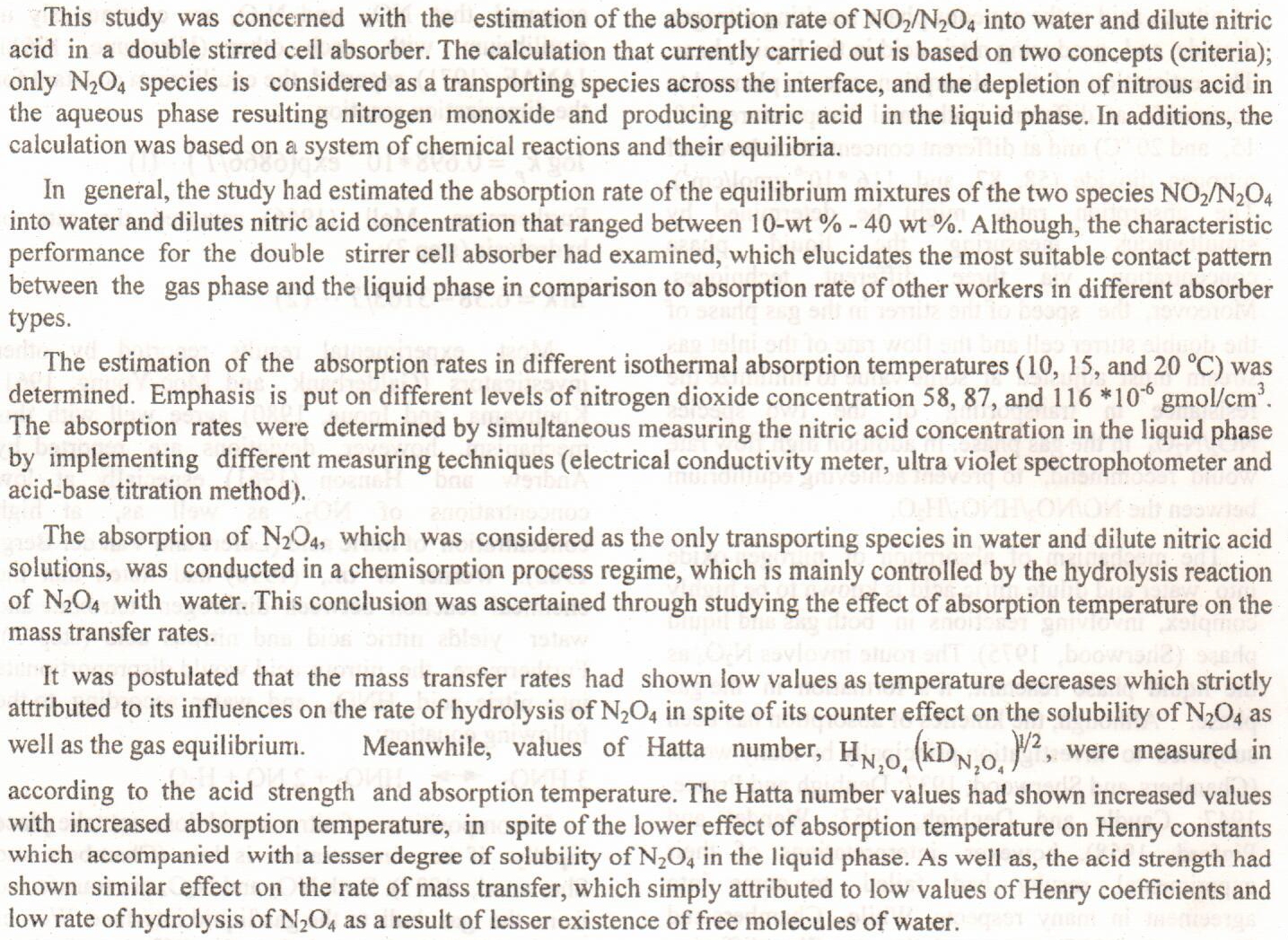
In this study, sawdust as a cheap method and abundant raw material was utilized to produce active carbon (SDAC). Physiochemical activation was utilized where potassium hydroxide used as a chemical activating agent and carbon dioxide was used as a physical activating agent. Taguchi method of experimental design was used to find the optimum conditions of SDAC production. The produced SDAC was characterized using SEM to investigate surface morphology and BET to estimate the specific surface area. SDAC was used in aqueous lead ions adsorption. Adsorption process was modeled statistically and represented by an empirical model. The highest specific surface area of SDAC was 688.3 m2/gm. Langmuir and Freundlich isotherms were used to
... Show MorePreviously, many empirical models have been used to predict corrosion rates under different CO2 corrosion parameters conditions. Most of these models did not predict the corrosion rate exactly, besides it determined effects of variables by holding some variables constant and changing the values of other variables to obtain the regression model. As a result the experiments will be large and cost too much. In this paper response surface methodology (RSM) was proposed to optimize the experiments and reduce the experimental running. The experiments studied effects of temperature (40 – 60 °C), pH (3-5), acetic acid (HAc) concentration (1000-3000 ppm) and rotation speed (1000-1500 rpm) on CO2 corrosion performance of t
... Show MoreThe inhibitive power of Polyvinyl Alcohol (PVA) was investigated toward the corrosion of carbon steel in 0.2N H2SO4 solution in the temperature range of 30-60˚C and PVA concentration range of 150-2000 ppm.
The corrosion rate was measured using both the weight loss and the electrochemical techniques. The weight loss results showed that PVA could serve as a corrosion inhibitor but its inhibition power was found to be low for the corrosion of carbon steel in the acidic media. Electrochemical analysis of the corrosion process of carbon steel in an electrochemical corrosion cell was investigated using 3-Electrode corrosion cell. Polarization technique was used for carbon steel corrosion in 0.2N H
 (4)
(4)
 (3)
(3)
 (2)
(2)
 (11)
(11)
 (8)
(8)
 (25)
(25)
Objective: To study the protective eff ects of cinnamic acid on dextran sodium sulfate (DSS) induced ulcerative colitis (UC) in mice. Materials and methods. Forty adult male mice were randomLy divided into fi ve groups, control group, an induction group received 3% DSS in drinking water for 7 consecutive days. Two treatment groups received oral suspension of cinnamic acid 50 and 25 mg/kg, respectively and 3% DSS in drinking water, for 7 consecutive days. The fi nal group received oral suspension of cinnamic acid 50 mg/kg for the latter 7 days without DSS in drinking water. All the animals were euthanized on day eight. The colon of animals was extracted and divided into two sections, the middle was homogenized and biochemically analy
... Show More (1)
(1)
 (3)
(3)
Expired drug Metoclopramide was investigated as an antibacterial corrosion inhibitor for carbon steel in 0.5M H3PO4 solution using the electrochemical method at 30oC and 60oC. The results showed that this drug is an efficient inhibitor for carbon steel and the efficiency reached to 82.244 % for 175 ppm at 30oC and 76.146% for 225 ppm at 60oC. The adsorption of drug on carbon steel surface follows Langmuir adsorption isotherm with small values of adsorption-desorption constant. The polarization plots revealed that Metoclopramide acts as mixed-type inhibitor. Some parameters of inhibition process were calculated and discussed. The surface morphology of the carbon steel speci
... Show More (6)
(6)
This paper presents a computer simulation model of a thermally activated roof (TAR) to cool a room using cool water from a wet cooling tower. Modeling was achieved using a simplified 1-D resistance-capacitance thermal network (RC model) for an infinite slab. Heat transfer from the cooling pipe network was treated as 2-D heat flow. Only a limited number of nodes were required to obtain reliable results. The use of 6th order RC-thermal model produced a set of ordinary differential equations that were solved using MATLAB - R2012a. The computer program was written to cover all possible initial conditions, material properties, TAR system geometry and hourly solar radiation. The cool water supply was considered time
... Show More